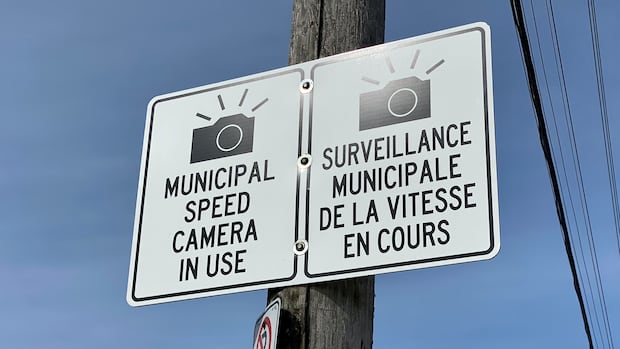Top Stories
Ottawa’s Speed Cameras Shut Down: $210M Fund Announced

UPDATE: Ottawa’s automated speed enforcement cameras have been officially turned off, with the city confirming their imminent removal. This decision follows the recent passage of Bill 56, which strips municipalities of the authority to use these cameras in community safety zones, including critical areas near schools.
In a briefing to the mayor and city council, Alain Gonthier, Ottawa’s general manager of public works, stated that the cameras are no longer operational and signs alerting drivers have already been taken down. The physical removal of the cameras, operated by a third-party vendor, will happen in the coming days as part of a transition process.
This abrupt change comes despite unanimous support from city councillors to maintain the cameras, especially in school zones, where evidence shows they effectively reduce traffic speed and lower collision rates. Ottawa had planned to deploy 84 active cameras this fall, with 70 of them located in school zones, parks, and areas notorious for high-speed driving.
As of November 14, 2024, the city will no longer be able to issue automated speeding tickets. However, fines issued before this date remain “valid and enforceable,” according to Gonthier. Bill 56 now mandates the installation of larger signage in school zones, with city staff tasked to implement these signs at former camera locations “as soon as operationally feasible.”
In response to the shutdown, the provincial government has announced a new $210 million road safety initiatives fund to assist municipalities affected by the cessation of speed cameras. Specifics on how the funds will be allocated are expected early next year, but cities must report their revenue from automated speed enforcement and how those funds were utilized.
Ottawa is set to receive just over $4 million in immediate funding, which must be directed toward road safety initiatives at camera sites. This includes temporary police enforcement, traffic calming measures such as speed bumps, raised crosswalks, and improved signage. Gonthier indicated that city staff are developing a “high-level traffic calming plan” for each of the affected sites.
Automated speed enforcement had generated approximately $20 million in revenue for Ottawa as of August, with projections estimating $31 million for 2024. The city reported a significant increase in compliance with speed limits in areas where cameras were deployed, rising from 16 percent to 81 percent over the first three years of the program, while instances of high-end speeding dropped dramatically from 14 percent to less than 1 percent.
The removal of these cameras raises concerns about the potential rise in traffic violations and the safety of pedestrians, especially children near schools. As the city adapts to these new regulations, residents are urged to remain vigilant and adhere to speed limits to ensure community safety.
As the situation develops, more information will be provided on the allocation of the new funding and the city’s plans to maintain road safety without automated enforcement. Stay tuned for updates.
-

 Politics3 weeks ago
Politics3 weeks agoSecwepemc First Nation Seeks Aboriginal Title Over Kamloops Area
-

 World4 months ago
World4 months agoScientists Unearth Ancient Antarctic Ice to Unlock Climate Secrets
-

 Entertainment5 months ago
Entertainment5 months agoTrump and McCormick to Announce $70 Billion Energy Investments
-

 Lifestyle4 months ago
Lifestyle4 months agoTransLink Launches Food Truck Program to Boost Revenue in Vancouver
-

 Science5 months ago
Science5 months agoFour Astronauts Return to Earth After International Space Station Mission
-

 Technology3 months ago
Technology3 months agoApple Notes Enhances Functionality with Markdown Support in macOS 26
-

 Top Stories2 months ago
Top Stories2 months agoUrgent Update: Fatal Crash on Highway 99 Claims Life of Pitt Meadows Man
-

 Lifestyle3 months ago
Lifestyle3 months agoManitoba’s Burger Champion Shines Again Amid Dining Innovations
-

 Sports5 months ago
Sports5 months agoSearch Underway for Missing Hunter Amid Hokkaido Bear Emergency
-

 Politics4 months ago
Politics4 months agoUkrainian Tennis Star Elina Svitolina Faces Death Threats Online
-

 Politics4 months ago
Politics4 months agoCarney Engages First Nations Leaders at Development Law Summit
-

 Technology5 months ago
Technology5 months agoFrosthaven Launches Early Access on July 31, 2025





















